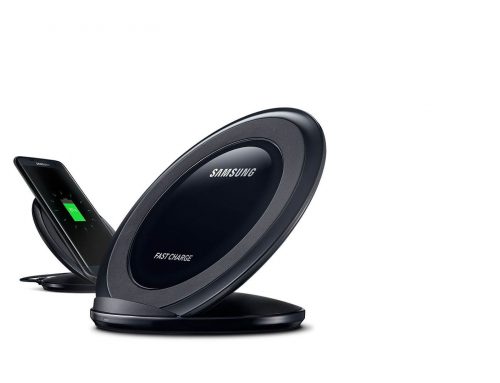As we approach the end of 2017, it’s time to take a look at key B2B marketing trends that will emerge in the year ahead.
Continuing a pattern from previous years, 2018 will see the ongoing evolution of many B2B marketing trends from years past and several newer concepts will become more mainstream. So what trends will likely have the biggest impact on firms in the year ahead? Here’s a list of seven B2B marketing trends to watch in 2018.
1. Expanding role of B2B marketing
To meet the demands of today’s marketplace, it’s imperative that the traditional role of B2B marketers expands beyond the comforts of the marketing department. Today’s B2B firms are faced with a growing number of unique challenges including talent shortages, changing buyers, commoditization and increasing competition to name just a few. While these are certainly organizational challenges that will require cross-departmental collaboration to solve, marketing is well-positioned to lead the charge.
While we’re already seeing marketing’s increasing involvement with initiatives traditionally owned exclusively by HR, sales and operations, 2018 will definitely see marketing’s talents put to greater use firm-wide:
- To address the war for talent, marketers will start to play a larger role in helping their firms develop and execute employer branding and talent (recruitment) marketing strategies
- HR teams will also ask marketing to assist with retention-driven initiatives like improving internal communication and developing more useful company intranets
- As more firms launch formal client experience (CX) initiatives, marketing teams will be asked to play a significant role in the cross-functional process (see #2)
- Business development and sales teams looking to narrow their focus and expand their impact will need marketing to drive account-based campaigns (see #3)
While these are just a few examples of how marketing’s role is likely to evolve, the biggest takeaway is that B2B firms are starting to see marketing’s value and its potential for greater contribution to bottom-line success.
2. A 360 degree view of experience
If there is a business concept that permeates virtually every industry—both B2B and B2C—it’s experience. Customer experience (CX) has emerged as the key to creating genuine differentiation and sustained competitive advantage in the “age of the customer.” While many of our B2C counterparts figured this out a while ago, B2B firms now recognize that to win in business requires a truly customer-centric approach. But creating unrivalled CX doesn’t happen in a vacuum! In fact, firms are starting to understand that the other Xs—user experience (UX), brand experience (BX) and employee experience (EX)—are all part of the CX equation.
You can’t provide exceptional CX without considering UX. It also takes a great culture and a highly engaged, client-focused workforce (EX) to make CX happen. And UX, CX, and EX are what ultimately brings your brand promise to life (BX). The point is, in 2018, more firms will start to consider experience in every facet of their business, adopting a holistic or 360 degree view of experience. As UX, CX, EX and BX converge, alignment of the four is essential to fulfilling the mission of each and ultimately creating sustainable competitive advantage.
3. Account-based marketing and sales strategies
Account-based marketing (ABM) has been a hot topic in B2B marketing the past few years and it picked up a lot of steam in 2017. Research shows that 92% of firms recognize the value of ABM, going as far as calling it a B2B marketing “must have.” For B2B firms with long, complex sales cycles that often involve many stakeholders and transactions that are typically high-value in nature, ABM represents a more effective way to generate new business than solely relying on “inbound” approaches to lead generation.
While ABM does require a close collaboration and alignment with sales (or business development depending on your firm’s vernacular), firms are also starting to realize the need to move to an account-centric model across marketing, sales and client success. Engagio refers to this as “account-based everything” and defines it as “a strategic go-to-market approach that orchestrates personalized marketing, sales, and success efforts to land and expand at named accounts.” Understanding that repeat business represents a significant portion of many firms’ revenue stream, look for account-based marketing and sales strategies to dominate in 2018.
4. Old-school content marketing (thought leadership)
The sheer volume of B2B content available (and promoted) in almost every vertical has led many to question whether we’ve reached “peak content,” and whether or not content marketing is worth the hype. A recent study by Edelman and LinkedIn revealed that thought leadership content containing valuable insights does play an important role throughout the entire B2B buyer’s journey—from firm awareness to consideration and selection. The study contained a plethora of reassuring insights that creating the right kind of content—content that seeks to educate, inform and demonstrate the thinking and expertise of a firm to a prospective buyer—is still very much essential.
The results from the study are important reminders that B2B content marketing should be laser focused on promoting authentic thought leadership, as opposed to self-promotion and sales. In 2018, B2B content marketing will get back to its roots—seeking to “create and distribute valuable, relevant, and consistent content to attract and retain a clearly defined audience.” So look for less emphasis on the sheer quantity of content and more focus on creating quality, original, thought leadership-oriented content that educates buyers and provides a window into the caliber of thinking a firm is likely to deliver.
5. Formats, channels and promotional mix shakeup
While firms refocus their content on thought leadership, there will also be the need to fine tune their content and promotional mix as well. Firms with smaller teams and limited resources will need to better focus their efforts. While firms with larger teams and more sophisticated content marketing programs will shift towards leveraging a broader mix of formats, as well as an adjustment of their overall social media presence.
Here are some of the content and promotion trends for 2018:
- Investment in video, video and more video—short form, long form and live video will become much more prominent
- Live streaming events as an alternative to webinars
- Diversification of content formats to include a broader mix including podcasts, interactive assessments and mobile-friendly (non-PDF) content
- Visual content such as infographics will see a resurgence
- As enthusiasm for Twitter (and LinkedIn for some) starts to wane, non-traditional B2B social platforms such as FaceBook and Instagram will start to play a larger role
- Increasing reliance on paid amplification to boost distribution, as opposed to organic-only
- More attention given to influencer marketing and native advertising to support program goals
6. Smarter measurement and data-driven marketing
One of the many benefits of marketing in the digital age is the availability of real-time analytics, allowing marketers to understand how their marketing is performing and make necessary adjustments. But in spite of the hype around Big Data, the average B2B marketer has found synthesizing and acting on data to be a challenge. However, the push for demonstrating ROI to leadership, combined with the growing demands of Customer Experience (CX) and account-based strategies, necessitates changes to analtyics in 2018.
Look for marketers to account for measurement earlier in the process at the strategic planning level, as opposed to the tactical execution level. Instead of being guided by the endless amount of data that can be culled from analytics, B2B firms will start to identify smarter and sometimes unconventional ways to measure, which will ultimately drive better business decisions. This means marketers will increasingly start to rely on MarTech tools fueled by artificial intelligence (see #7) to sift through the vast amount of collected data, but it will also mean a rethinking of what metrics matter in the first place.
Looking beyond the token marketing metrics for web, social and email, B2B marketers will also start to place more emphasis on client research in 2018, including qualitative interviews, antidotal client/prospect feedback and satisfaction surveys. With the proper measurements in place, and the most pertinent data at the forefront, B2B marketers will shift their efforts to be more data-driven.
7. Exploration of emerging technologies
I don’t think I could faithfully assemble a list of 2018 B2B marketing trends without paying some respect to the emerging technologies that seem to be all the buzz as of late. I’m talking about things like artificial intelligence (AI), machine learning, chatbots, virtual and augmented reality (VR & AR) and the Internet of Things (IoT), among many others.
For many B2B marketers, these emerging technologies are incredibly abstract and the direct application is not always obvious. And while there are certainly examples of these emerging technologies being leveraged by B2B firms on the bleeding edge (I’ve personally been a recent chatbot victim of a SaaS provider), 2018 will see many firms exploring how to leverage these emerging technologies.
Many firms will also start experimenting with various applications such as:
- Chatbots for sales and service (in addition to live chat)
- Using AI to sift through data, identify trends and provide additional client/buyer insights
- VR being used to sell clients and prospects the experience of “trying before you buy” (e.g. architecture, construction, etc.)
- IoT devices that provide user insights into a wide array of things, from energy meters to embedded sensors in retail locations to track traffic patterns
While these are just a few examples of how emerging technologies can benefit B2B marketers, look for greater exploration and adoption across the board in 2018.
Identifying trends, not fads
There are certainly a variety of other B2B marketing trends that will also likely pick up steam in 2018 (and a whole bunch of fads will come and go too). This list, while admittedly not comprehensive, provides a look at some B2B marketing trends to consider and watch in the year ahead.






